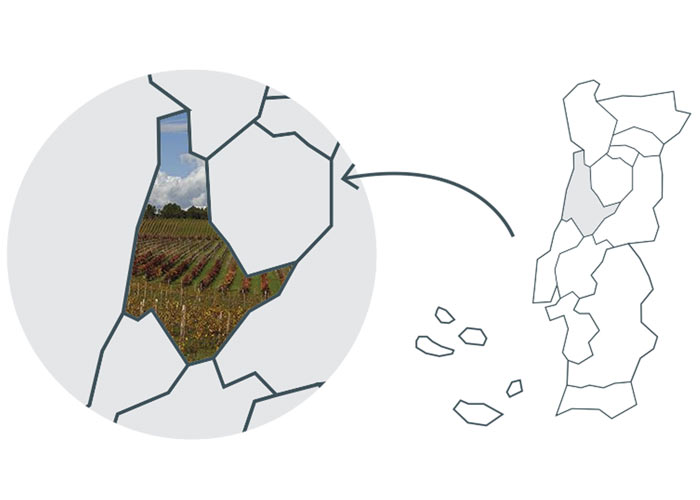Wine regions
Portuguese wine regions
Bairrada
A bit of history
D. Afonso Henriques approved the vines in Herdade de Eiras in 1137, imposing a 25% tax over the production of the estate. Things have changed across centuries and many old habits ultimately disappeared – unfortunately, that was not the case with taxes..
What to expect?
Bairrada has a mild, maritime climate with abundant rainfall. Although much of the Bairrada region is hilly, the majority of the vineyards are on flatter land. Vineyards are often divided into a multitude of small plots. There are two main types of soil: clay-limestone and sandy, each influencing style of wine.
This is a very important area for sparkling wines. Base wines for sparkling wines need the kind of high acidity that the cool Bairrada climate delivers. Sparkling Bairrada wines may have the fragrance of the Maria Gomes grapes (also known as Fernão Pires), or they may be more steely, based perhaps on Arinto, Bical and Cercial, sometimes with some Chardonnay. There are also ‘blancs de noirs’ based on quickly-pressed Baga.
Baga is the traditional local red grape. It makes tannic wines that can have high acidity if under-ripe, but if ripened and handled well the Baga can give rich, dense fruity reds that age into elegant wines of great complexity.
Reds
Rubi coloured and fruity aromas when young, browner shades and complex bouquets when aged. Balanced, full-bodied wines.
Common varieties: Baga, Alfrocheiro, Tinta Pinheira and Touriga Nacional.
Whites
Citric, greeny, fruity when young and with a twist of resin as they age. Elegant, fresh, persistent.
Common varieties: Arinto, Fernão Pires, Bical, Cercial e Rabo-de-Ovelha.
Adapted from: CVR Bairrada, Wines of Portugal, Instituto do Vinho e da Vinha.


